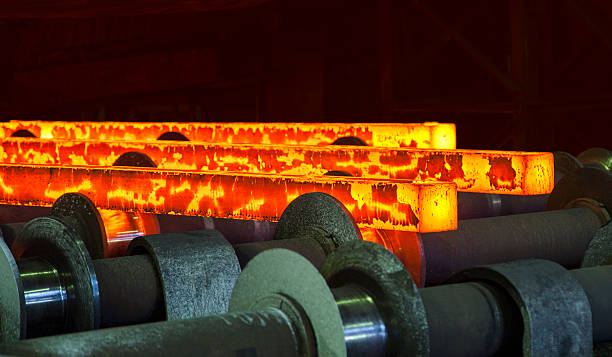Project Report For TMT Rolling Mill
Introduction
Project Report For TMT Rolling Mill is as follows.
A TMT rolling mill, sometimes called a thermo-mechanically treated rolling mill, is a specialised establishment used in the steel industry to create high-strength and long-lasting reinforcing bars, also known as TMT bars or TMT steel rods. In order to strengthen and stabilise concrete buildings, TMT bars are frequently utilised in construction projects.
There are several steps in the TMT rolling mill process. To make molten steel, scrap or raw materials are first melted in an electric arc furnace. Once the appropriate chemical composition has been achieved and impurities have been eliminated, the molten steel is refined in a ladle furnace. A continuous casting machine is used to constantly cast the refined steel into billets or blooms of predetermined sizes. These intermediate goods are used as raw materials in the rolling mill.
The billets or blooms are heated in a reheating furnace to a temperature appropriate for rolling before being sent to the rolling mill. The heated billet is then sent through a succession of rolling supports, gradually reducing its cross-sectional area and giving it the required profile, usually round or ribbed. Steel undergoes mechanical deformation during the rolling process, which enhances its characteristics and strength.
The TMT bars go through a specific procedure known as thermomechanical treatment while being rolled. Following the rolling process, this entails giving the steel a controlled cooling. Using water spray systems or other cooling techniques, the TMT bars are quickly quenched before being subjected to controlled air cooling. This procedure modifies the steel’s microstructure, resulting in the formation of a durable outer martensitic layer and a ductile inner layer.
The TMT bars are then cut to the desired lengths and put through a number of finishing procedures, such as surface treatment and straightening, to get rid of any flaws or scale and improve their look. To achieve perfect temperature control, homogeneous rolling, and exact dimensional tolerances, TMT rolling mills are outfitted with cutting-edge technology and automated systems.
To monitor the mechanical qualities and guarantee adherence to pertinent industry standards, quality control methods are put in place at every stage of the process. When compared to mild steel bars, TMT bars made in a TMT rolling machine have a number of benefits. They are perfect for structural applications in earthquake-prone and coastal areas due to their high tensile strength, superior ductility, and improved corrosion resistance.

Types Of Tmt Rolling Mill
Hot Rolling Mill: This type of TMT rolling mill is intended for high-temperature steel processing. It is made up of a series of rolling stands that lower the cross-sectional area of the steel billet or bloom gradually. TMT bars of various diameters and profiles may be produced in hot rolling mills.
Continuous TMT Rolling Mill: Steel billets or blooms are constantly fed into the rolling stands without interruption in a continuous TMT rolling mill. This mill is very efficient and well-suited for large-scale manufacturing. Continuous rolling mills are high-productivity machines that are widely employed in modern steel industries.
Semi-Continuous Rolling Mill: A semi-continuous TMT rolling mill combines the advantages of both hot and continuous rolling. Steel billets or blooms are fed into the rolling stands on a regular basis in this sort of mill. It offers a good blend of productivity and flexibility, making it suited for medium-sized companies.
Reversible Rolling Mill: A reversible TMT rolling mill allows the rolling direction to be changed, allowing the manufacturing of TMT bars with various profiles, such as round and square. This type of mill is multifunctional and allows for greater product diversity.
Market Potential Of TMT Rolling Mill
The market share for TMT rolling bar is anticipated to grow by 153.02 million tonnes between 2021 and 2026, at a CAGR of 3.50%.
TMT bar and associated infrastructure material demand is usually impacted by the construction industry’s development and investment in infrastructure projects. TMT bars are widely utilised in residential, commercial, and infrastructure building due to their great strength and endurance. Growing urbanisation, population expansion, and infrastructure development in emerging nations can all contribute to increased demand for TMT bars and, as a result, the market potential for TMT rolling mills.
The market potential of a TMT rolling mill in 2023, it would be advisable to examine construction industry projections, infrastructure investment plans, and regional market trends closer to that date. Consulting industry research, market studies, and speaking with experts in the sector may offer more precise insights into the particular market circumstances and prospective possibilities for TMT rolling mills in 2023.
Project Report Sample On TMT Rolling Mill
Need Help?
Create 100% Bankable Project Report
